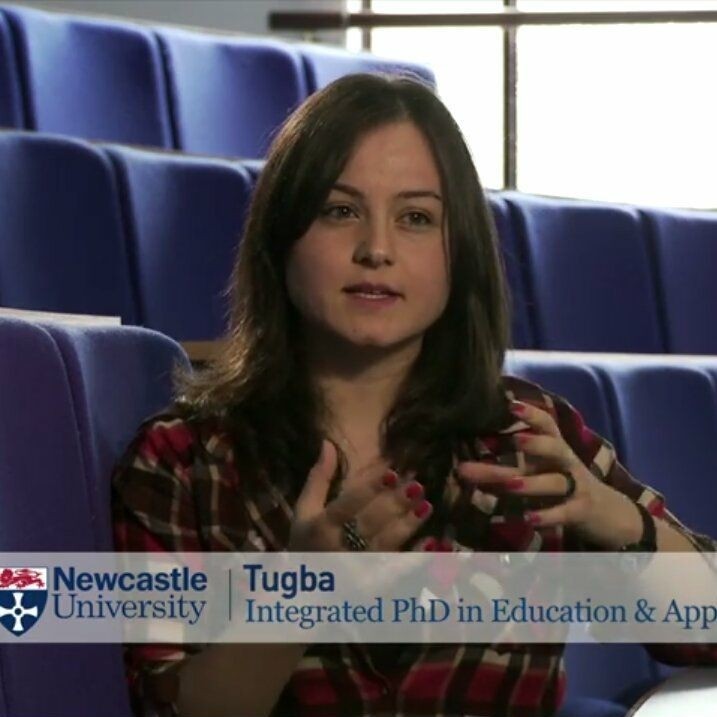Research Article
Systematic Reviews and Meta Analysis
Systematic Reviews and Meta Analysis
1. Van Hiele Geometrik Düşünme Düzeyleri, Başarı ve Tutum Arasındaki İlişki: Bir Meta-Analiz ÇalışmasıSystematic Reviews and Meta Analysis
2. Öğrenci Merkezli Yöntem, Teknik ve Stratejilerin Öğrenci Tutumuna Etkisi: Bir Meta Analiz ÇalışmasıSystematic Reviews and Meta Analysis
3. Eğitim Yönetimi Alanında Yayımlanan Araştırmaların Eğilimleri: Betimsel İçerik AnaliziSystematic Reviews and Meta Analysis
4. Data Mining Studies in Education: Literature Review For The Years 2014-2020Aim & Scope
The main purpose of the Journal of Bayburt Education Faculty; to create a scientific platform where scientists working in all fields of education share their knowledge, experience, evaluation, opinions, and suggestions, and to contribute to the studies in the field of education at national and international level.
Journal of Bayburt Education Faculty aims to provide solutions to problems at all levels of education, from preschool education to higher education. Our journal is a peer-reviewed national journal published in the field of educational sciences. The target audience of our journal; teacher candidates, teachers, academicians, and individuals and organizations that produce products and services for the education sector in all areas of educational sciences. In all areas of education, practical or theoretical studies, model recommendations, analysis and evaluations, quantitative and qualitative research are included in our journal.
Author Guidelines
The following rules should be taken into account in the article narration.
ii. Titles: The main title of the article should be 12 points, bold, centered, the first letters of all words should be large and no more than 14 words. First-level titles should not be numbered, 10 points, bold, the first letters of all words should be capitalized and centered. The second level titles should be written in 10 points, bold, the first letters of all words should be written in large and left-leaning. Third-level titles should be written 10 points to the left [1/2 indentation], only the first letter of the first word should be written in large and bold. The fourth title (only the first letter of the first word should be written according to the characteristics of capital, left-leaning [1/2 indentation], italic and bold).
iii. Author names: 10 points, centered, author name, and surname should be given only the first letters of capital letters. Author addresses should be given in 9 points as sub-information and should contain only the following information: University, faculty, department, province, country, e-mail (If it is an institution other than the University, it is enough to write the name of the institution instead of the university, faculty and department name).
Citation Examples
For articles (if DOI number):
Ekici, G., & Erdogan, E. (2019). Perception of Peace in Gifted Students (Case of Kırıkkale). Journal of Bayburt Education Faculty, 14(28), 196-216. doi:10.35675/befdergi.465783
Display in parentheses within the text: (Ekici & Erdoğan, 2019)
Display in text: [For English Articles] Ekici and Erdoğan (2019); [For articles in Turkish] Ekici and Erdogan (2019)
For articles (if no DOI number):
Cetinkaya, P., & Erktin, E. (2002). Assessment of metacognition and its relationship with reading comprehension, achievement, and aptitude. Boğaziçi University Journal of Education, 19(1), 1-11.
Akkan, Y., & Çakıroğlu, Ü. (2011). Examination of primary school mathematics teachers and pre-service teachers' beliefs about the use of calculators in mathematics education. Educational Technology Theory and Practice, 1(2), 17-34.
Display in parentheses within the text: (Akkan & Çakıroğlu, 2011; Çetinkaya & Erktin, 2002)
Display in text: [For articles in English] Akkan and Çakıroğlu (2011) and Çetinkaya and Erktin (2002); [For articles in Turkish] Akkan and Çakıroğlu (2011) and Çetinkaya and Erktin (2002)
For articles in print:
Guler, M., Cekmez, E., & Celik, D. (in Press). Breaking with tradition: An investigation of an alternative instructional sequence designed to improve prospective teachers' noticing skills. Teaching and Teacher Education.
Notation in parentheses in the text: [First occurrence] (Güler, Çekmez & Çelik, in press); [Next screenings] (Güler et al./et al., in press/in press)
Notation for text: [First occurrence] Güler, Çekmez and Çelik (in press); [Next screenings] Guler et al./et al. (in press)
For books: (If there is a DOI number, it must be specified)
Baki, A. (2018). Knowledge of teaching mathematics (2nd ed.). Ankara: Pegem Academy. doi:10.14527/9786052410318
McMillan, J. H, & Schumacher, S. (2009). Research in education: Evidence-based inquiry (2nd ed.). Pearson
Notation in parentheses within the text: (Baki, 2018; McMillan & Schumacher, 2009)
Notation for text: [for articles in Turkish] Baki (2018) and McMillan and Schumacher (2009); [For articles in English] Baki (2018) and McMillan and Schumacher (2009)
For the chapter in the edited book: (If there is a DOI number, it must be specified)
Karademir, A. (2019). Characteristics of preschool teachers. In A. Yıldırım (Ed.), Introduction to early childhood education (1st edition, pp. 164-188). Ankara: Pegem Academy. doi:10.14527/9786052419625
Cockburn, A. D. (2008). Developing an understanding of children's acquisition of number concepts. In A. D. Cockburn & G. Littler (Eds.), Mathematical misconceptions (1st ed., pp. 86-100). London: SAGE Publications Inc.
Notation in parentheses within the text: (Cockburn, 2008; Karademir, 2019)
Display for text: [For articles in Turkish] Cockburn (2008) and Karademir (2019); [For articles in English] Cockburn (2008) and Karademir (2019)
For reports prepared by the institution and organization:
Ministry of Education. (2018). Visual arts course (9th, 10th, 11th and 12th grades) curriculum. Ankara: Ministry of National Education. http://mufredat.meb.gov.tr/Dosyalar/2018120204014821-gorsel%20sanatlar%20dop%20(2).pdf
Showing in parentheses in the text: (Ministry of National Education, 2018); [If abbreviation will be used] (Ministry of National Education [MEB], 2018), (MEB, 2018)
In-text representation: Ministry of National Education (2018); [If abbreviation will be used] Ministry of National Education [MEB] (2018)
For conference and symposium presentations:
Isler Baykal, I., & Knuth, E. (2013, July 28- August 2). Preservice teachers conceptions of algebra and knowledge of student thinking [Conference session]. 37th Conference of the International Group for the Psychology of Mathematics Education, Kiel, Germany.
Display in parentheses within the text: (İşler Baykal & Knuth, 2013)
In-text representation: [for articles in Turkish] İşler Baykal and Knuth (2013); [For articles in English] İşler Baykal and Knuth (2013)
For theses:
Ertor, E. (2015). Opinions of kindergarten teachers working in primary school on administrative problems they experience (Master's thesis). Erzurum, Ataturk University.
Showing in parentheses in the text: (Ertör, 2015)
For web pages:
NTV. (2017). Computer game addiction is becoming a mental illness! Retrieved on April 26, 2020 from https://www.ntv.com.tr/saglik/.
Scientific American (n.d.) What is 'fuzzy logic'? Are there computers that are inherently fuzzy and do not apply the usual binary logic? Retrieved April 26, 2020, from https://www.scientificamerican.com/article/what-is-fuzzy-logic-are-t/
Display in parentheses in the text: (NTV, 2017; Scientific American, n.d.)
Ethical Principles and Publication Policy
1. Reviewers are only required to referee articles related to their areas of expertise.
2. Reviewers are expected to agree to referee articles that do not have conflicts of interest. If the referees notice any conflict of interest, they should inform the editor and refuse to referee the relevant article.
3. Referees should consider articles as biased and objective.
4. Referees should make the assessment in constructive and gentle language. It should not make derogatory personal comments that are hostile, defamatory, and insulting.
5. Referees are required to fill out the Referee Evaluation Form for the articles they evaluate, and they are expected not to mention their names in the correction proposals file in order not to harm the blind refereeing process. The referees are required to state their decisions regarding whether the article they evaluate is publishable and their reasons for their decisions in the Referee Evaluation Form.
General Responsibilities
1. The editor is obliged to make efforts to increase the quality of the journal and to contribute to its development.
2. In the study, is responsible for ensuring that authors and referees do not know each other.
3. Authors and referees should not be selected from the same institution. It is responsible for ensuring that the referees to whom the same study is sent are not from the same universities.
Relations with Referees
2. The editor is required to provide the referees with all the necessary information regarding the referee evaluation process and what is expected to be done by the referees.
3. The editor should ensure that the peer-review process is carried out with double-sided blind refereeing and should not disclose referees to authors and authors to referees.
4. The editor should evaluate the referees according to their timing and performance.
5. The editor should remove referees who make rude and unqualified comments or return late from the referee list.
6. The editor should constantly renew and expand the list of referees according to the specialties of the referees.
Price Policy
BAYEF'e gönderilen çalışmalar için değerlendirme ve basım süreçlerinin hiç bir aşamasında yazar(lar)dan herhangi bir ücret talep edilmemektedir.
Indexes
Journal Boards
Owner

Management
Editor-in-Chief

2005 yılında Tokat Gaziosmanpaşa Üniversitesi Sınıf Öğretmenliği programına yerleşti. 2009 yılında fakülteyi bitirip Ağrı/Eleşkirt/Yanıkdere İlkokuluna sınıf öğretmeni olarak atandı. 2012’de Atatürk Üniversitesi Eğitim Bilimleri Enstitüsü Sınıf Eğitimi yüksek lisans programından mezun oldu. Bu arada Millî Eğitim Bakanlığına bağlı farklı ilkokullarda sınıf öğretmenliği ve idarecilik görevlerinde bulundu. 2015 yılında Bayburt Üniversitesi Eğitim Fakültesi Temel Eğitim Bölümü Sınıf Eğitimi Anabilim Dalında araştırma görevlisi oldu. Aynı yıl Atatürk Üniversitesi Eğitim Bilimleri Enstitüsü Sınıf Eğitimi Bilim Dalında doktoraya başladı. 2019 yılında doktora eğitimini tamamlayıp Bayburt Üniversitesi Eğitim Fakültesi Temel Eğitim Bölümü Sınıf Eğitimi Anabilim Dalında doktor öğretim üyesi olarak çalışmaya başladı. 2022 yılında Temel Eğitim İlkokuma Yazma ve Türkçe Eğitimi alanında doçentlik unvanı almaya hak kazandı. Öğretmen yetiştirme, yazma eğitimi, öz-düzenleme, öğretmen öz-yeterliği gibi konular üzerine farklı akademik çalışmaları bulunmaktadır. Halen Bayburt Üniversitesi Eğitim Fakültesi Sınıf Eğitimi Anabilim Dalında öğretim üyesidir.
Associate Editors


Editorial Advisory Board
Editorial Advisory Board












Editorial Board




 Web
Web



Lisans: Hacettepe Universitesi - İngilizce Öğretmenliği
Yüksek Lisans: Newcastle University - TESOL & Applied Linguistics
Doktora: Newcastle University - Educational and Applied Linguistics

2005 yılında Tokat Gaziosmanpaşa Üniversitesi Sınıf Öğretmenliği programına yerleşti. 2009 yılında fakülteyi bitirip Ağrı/Eleşkirt/Yanıkdere İlkokuluna sınıf öğretmeni olarak atandı. 2012’de Atatürk Üniversitesi Eğitim Bilimleri Enstitüsü Sınıf Eğitimi yüksek lisans programından mezun oldu. Bu arada Millî Eğitim Bakanlığına bağlı farklı ilkokullarda sınıf öğretmenliği ve idarecilik görevlerinde bulundu. 2015 yılında Bayburt Üniversitesi Eğitim Fakültesi Temel Eğitim Bölümü Sınıf Eğitimi Anabilim Dalında araştırma görevlisi oldu. Aynı yıl Atatürk Üniversitesi Eğitim Bilimleri Enstitüsü Sınıf Eğitimi Bilim Dalında doktoraya başladı. 2019 yılında doktora eğitimini tamamlayıp Bayburt Üniversitesi Eğitim Fakültesi Temel Eğitim Bölümü Sınıf Eğitimi Anabilim Dalında doktor öğretim üyesi olarak çalışmaya başladı. 2022 yılında Temel Eğitim İlkokuma Yazma ve Türkçe Eğitimi alanında doçentlik unvanı almaya hak kazandı. Öğretmen yetiştirme, yazma eğitimi, öz-düzenleme, öğretmen öz-yeterliği gibi konular üzerine farklı akademik çalışmaları bulunmaktadır. Halen Bayburt Üniversitesi Eğitim Fakültesi Sınıf Eğitimi Anabilim Dalında öğretim üyesidir.

Görme Engellilerin Eğitimi, Kaynaştırma ve Bireyselleştirilmiş Eğitim Programı Hazırlama, Çoklu Yetersizliği Olan Çocukların Eğitimi, Görme ve Ek yetersizliği Olan Çocukların Eğitimi, Körsağır Çocukların Eğitimi
Foreign Language Editor
Language Editor

Layout Editors
2013 yılında İstanbul Üniversitesi Hasan Ali Yücel Eğitim Fakültesinden mezun olup, Milli Eğitim Bakanlığında göreve başlamıştır. Şu an Bayburt Üniversitesi, Matematik ve Fen Bilimleri Eğitimi Bölümünde araştırma görevlisi olarak çalışmaktadır.






